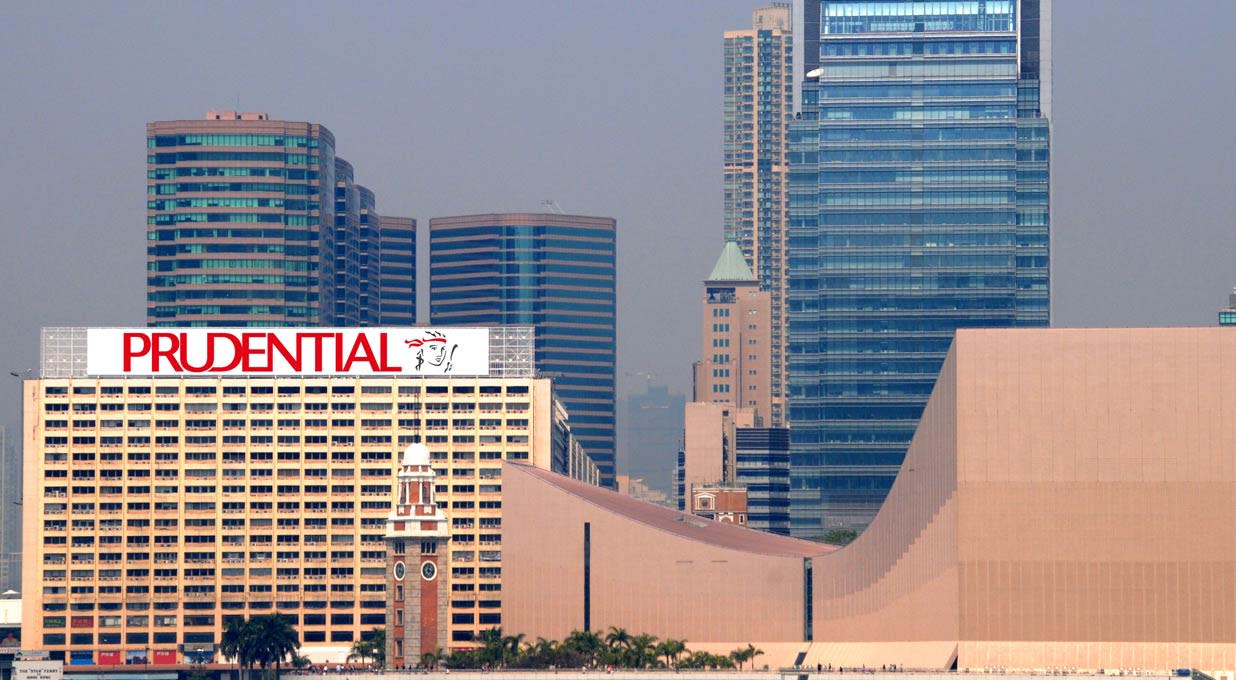Prudential reported annual premium equivalent (APE) sales of $4.6bn over the first nine months, up 7% when ignoring currency moves. For the third quarter alone, APE sales grew 10% with growth across all business segments.
New business profit was up 11% over the nine months to $2.3bn, with growth of 7% over the third quarter.
Funds under management at asset manager Eastspring rose from $247.4bn to $271.4bn from June to September, with net inflows of $1.7bn.
Prudential remains on track for full-year new business profit growth of 9-13%.
The shares rose 4.0% in early trading.
Our view
There was positive news over Prudential’s most recent quarter with sales to domestic customers in Hong Kong showing strong growth, and good momentum from its joint venture in mainland China. Recent stimulus measures should act as a tailwind to the latter and both trends are worth keeping an eye on.
Zooming further out, Hong Kong operations boast a market-leading position for products aimed at visitors from mainland China. The average number of visitors from China is now ahead of pre-pandemic levels. But strong performance last year when boarders reopened after the pandemic is acting as a tough comparator.
The product mix has shifted, with higher rates meaning savings products are taking a bigger chunk of the pie. More recently we're starting to see that shift back toward the higher margin health and protection business, a trend that would be beneficial if it continues.
Medium-term initiatives are evolution rather than revolution and include $1bn of investment across several core areas including technology, and creating a more joined-up customer approach across the product ranges.
Looking further ahead, the broader Asian and Indian regions should benefit from long-term economic development. Insurance uptake is also low in Areas like Asia, and in many cases state provisions for pensions and social security are limited. India offers lots of potential in the health insurance space, with a huge population and around half of all health expenses being covered by disposable cash. We see several longer term opportunities in many of these underpenetrated markets.
Prudential also has a massive asset management business, Eastspring, which manages over to $270bn of assets. It offers a host of investment solutions as well as managing premiums generated from the life insurance business. Improving market dynamics mean retail investors are moving back to higher margin equity funds.
Capital levels are strong, and the group’s committed to increasing the dividend 7-9% over the next couple of years. But this isn't a high yielder like some of its UK listed peers and nothing is guaranteed.
The refreshed strategy brings with it some bold goals, growing new business profit by 15-20% won't be easy but should conditions remain supportive there's plenty of opportunity ahead. We think Prudential's Asian focus and higher growth opportunities give a different option for a UK investor.
The key risk comes from China, where economic conditions have an outsized impact on Prudential sales. If stimulus measures fail to reignite growth, then the region could be a long-term headwind to contend with.
Environmental, Social and governance (ESG) risk
The financials sector is medium-risk in terms of ESG. Product governance is the largest risk for most companies, especially those in the US and Europe with enhanced regulatory scrutiny. Data privacy and security is also an increasingly important risk for banks and diversified financial firms. Business ethics, ESG integration and labour relations are also worth monitoring.
According to Sustainalytics, Prudential’s management of material ESG issues is strong.
Prudential trains sales employees annually on responsible marketing and has strong policies for data privacy and security. The company invests in digital products to enhance customer experience but does not disclose customer complaint details. While it offers thorough training on ethics and corruption, and also provides whistleblower protections, Prudential lacks ethical risk assessments in investment and product development.
Prudential key facts
All ratios are sourced from Refinitiv, based on previous day’s closing values. Please remember yields are variable and not a reliable indicator of future income. Keep in mind key figures shouldn’t be looked at on their own – it’s important to understand the big picture.
This article is not advice or a recommendation to buy, sell or hold any investment.No view is given on the present or future value or price of any investment, and investors should form their own view on any proposed investment.This article has not been prepared in accordance with legal requirements designed to promote the independence of investment research and is considered a marketing communication.Non - independent research is not subject to FCA rules prohibiting dealing ahead of research, however HL has put controls in place(including dealing restrictions, physical and information barriers) to manage potential conflicts of interest presented by such dealing.Please see our full non - independent research disclosure for more information.


